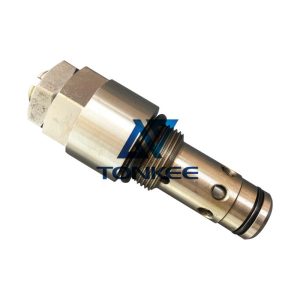
Pressure Range: The pressure range refers to the minimum and maximum pressure values that a PC pilot valve can handle.
It is important to select a valve with an appropriate pressure range that matches the requirements of the system. A valve with a narrower pressure range might be suitable for applications with a specific pressure setpoint, while a broader range is more versatile and can accommodate varying pressure conditions.
Flow Capacity: The flow capacity of a PC pilot valve indicates the maximum flow rate it can handle without causing excessive pressure drops. It is typically measured in terms of volume per unit of time (e.g., gallons per minute or cubic meters per hour). Selecting a valve with an adequate flow capacity ensures that it can handle the required flow rate without restricting the system's performance.
Valve Type: PC pilot valves come in various types, such as globe valves, diaphragm valves, ball valves, or butterfly valves. Each type has its advantages and limitations, making it crucial to choose the appropriate valve type based on factors like the application, the fluid being controlled, and the desired level of control precision.
Actuation Method: PC pilot valves can be actuated using different methods, including solenoids, air pressure, or manual operation. The actuation method determines how the valve responds to pressure changes and how it is controlled. Electrically actuated solenoid valves are common and allow for fast and precise control, while pneumatic valves are suitable for applications with compressed air systems.
Response Time: The response time of a PC pilot valve refers to the time it takes for the valve to fully open or close once it receives a control signal.
Faster response times are desirable for applications where rapid pressure adjustments are required to maintain system stability and performance. Factors influencing response time include valve design, actuation method, and the characteristics of the fluid being controlled.
Materials of Construction: The materials used in the construction of a PC pilot valve are vital for its compatibility with the process fluid and to ensure its durability. Valves may be made from metals (e.g., stainless steel, brass) or non-metallic materials (e.g., PVC, PTFE) depending on the application requirements. It is crucial to select materials that are resistant to corrosion, erosion, and other potential hazards present in the system.
Leakage Rate: Leakage rate refers to the amount of fluid that can escape past a closed valve. It is crucial to minimize leakage to maintain system integrity and prevent unnecessary fluid loss. PC pilot valves should be selected based on their leakage rate specifications to ensure efficient operation and prevent potential safety hazards.


